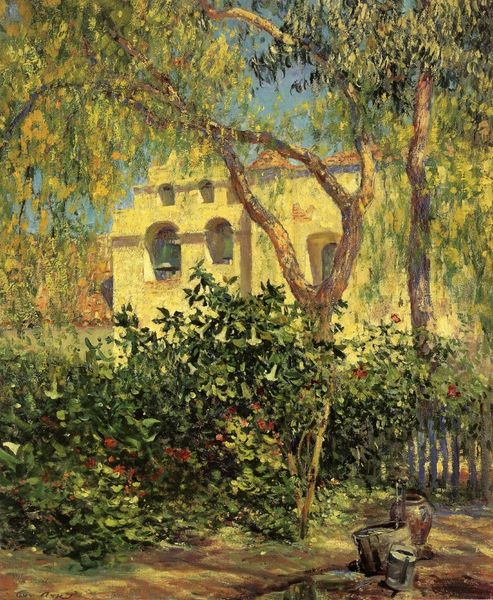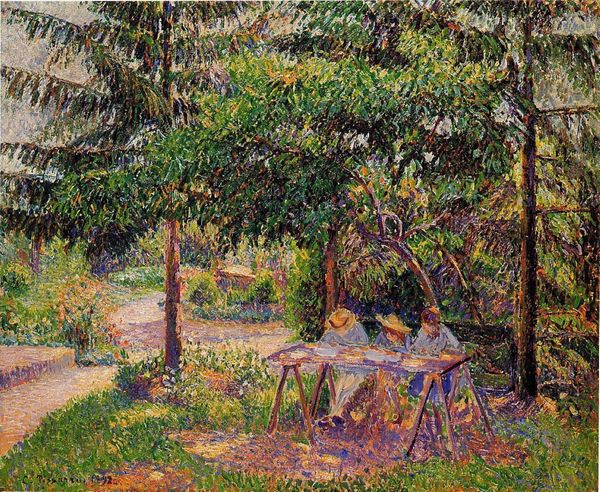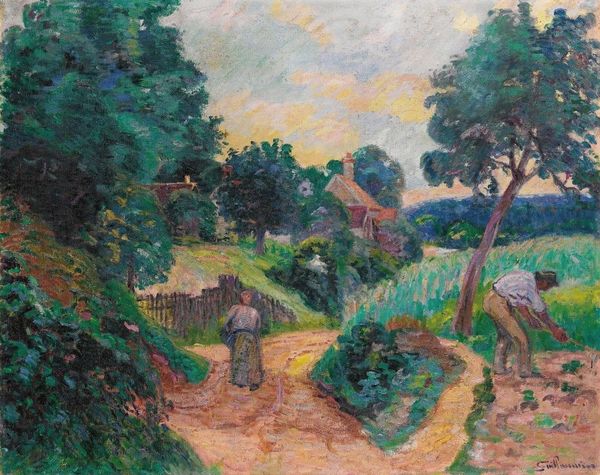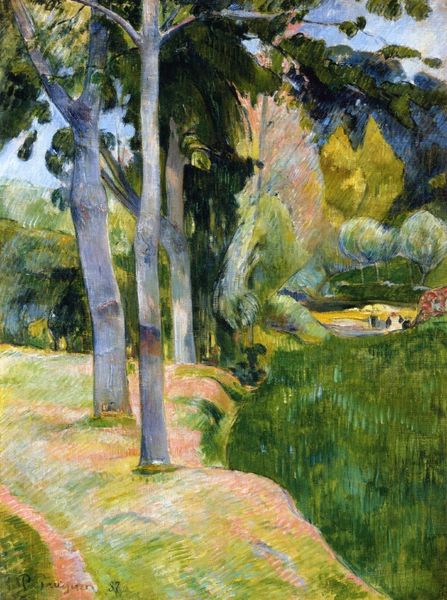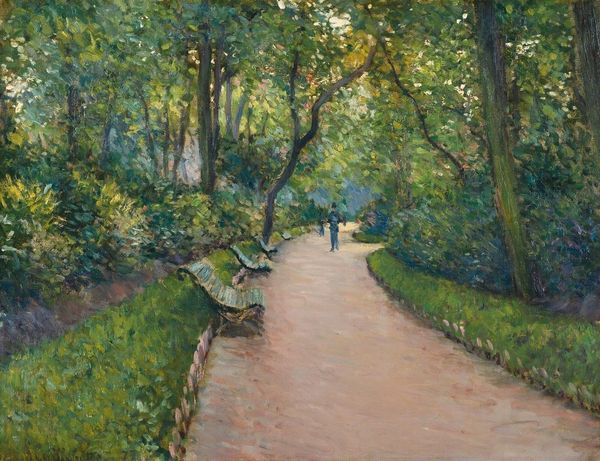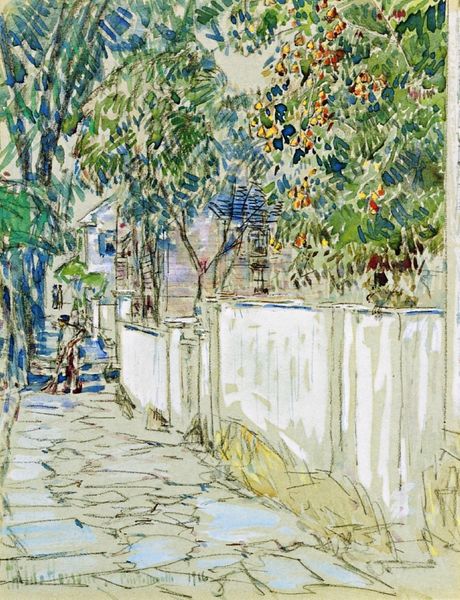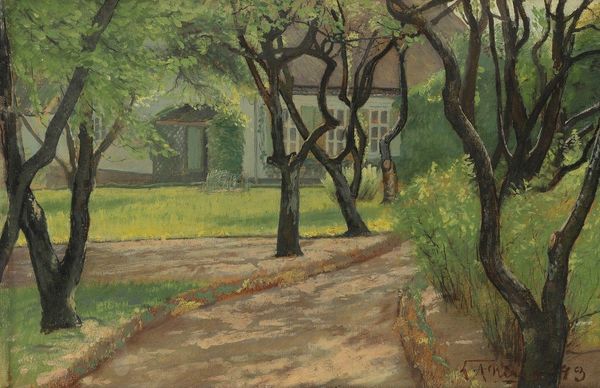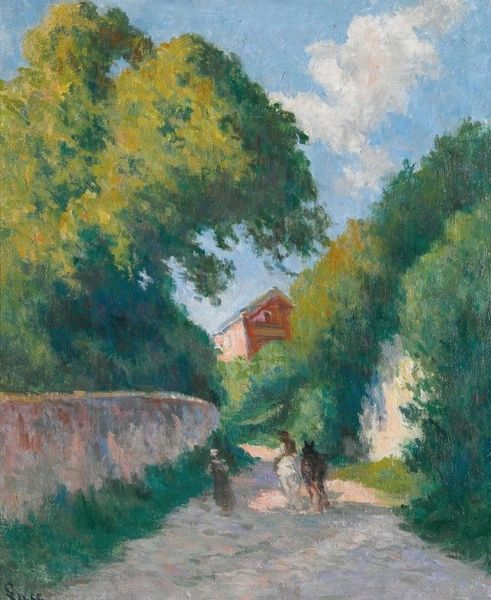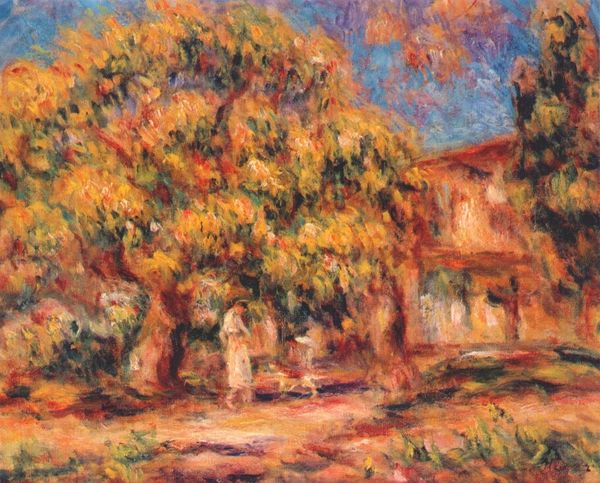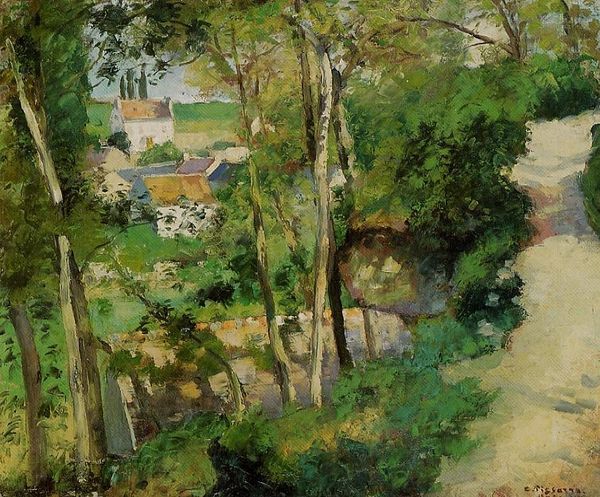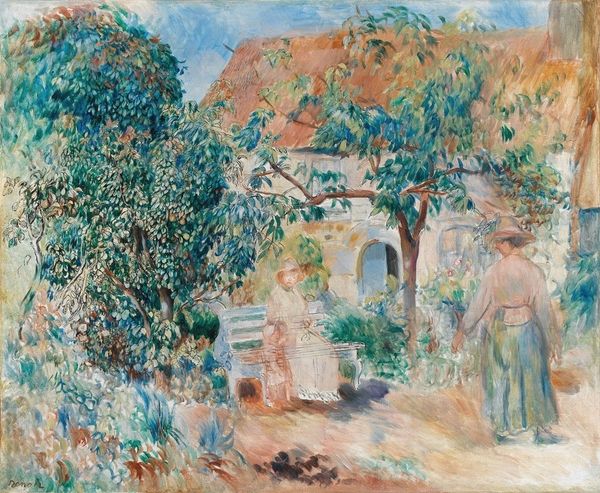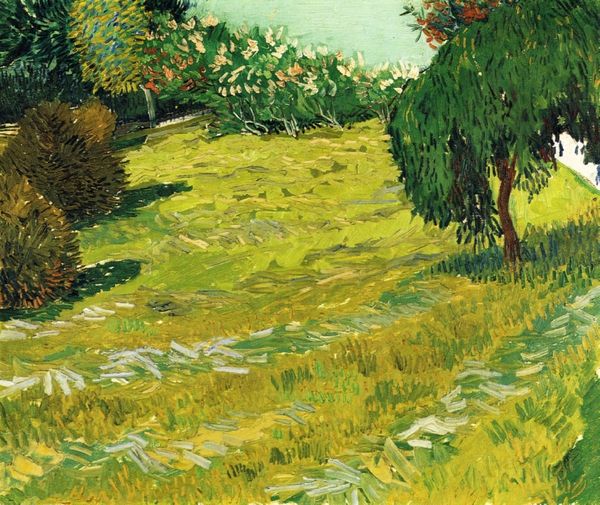
Copyright: Public Domain: Artvee
Editor: This is "Paris, Le Jardin D’alexandre Charpentier Au Hameau Boileau" by Maximilien Luce, circa 1900, made with oil paint. It feels like a very private, contemplative scene. What's your take? How do you interpret this work, looking at it from today’s perspective? Curator: It's tempting to see this as a simple domestic scene, but I think Luce, deeply influenced by social realism and anarchist ideals, invites us to consider more. This intimate depiction, while visually pleasing, needs to be situated within the socio-political context of turn-of-the-century France. Who is afforded such leisure? What structures enable this apparent idyll? What do you notice about the man and his environment? Editor: I see a man, perhaps an artist himself given the setting, relaxing in a well-maintained garden, seemingly without a care. There's also a cat at his feet, suggesting companionship. Is it a commentary on class and privilege? Curator: Precisely! Luce was a committed activist and saw art as a tool for social change. The lush garden, the leisurely figure, these become signifiers of a certain class position. We need to ask how that privilege is maintained and at whose expense. This wasn't simply about painting pretty pictures. The soft brushstrokes and dappled light can almost trick you into overlooking a harsher critique of society and class. Consider the composition; is there anything that feels intentionally exclusionary or suggestive? Editor: I didn’t see it at first. But I think I understand now that it seems almost deliberately excluding any sense of poverty from this painting. What do you mean about suggestive aspects, though? Curator: Note how the perspective contains the sitter in this well-contained space. I'd propose that, considering that Luce lived in times of high socio-political turmoil, what is suggested here may point at high walls as also protective against those who could have a good reason for anger. The artist is not just passively recording the scene, but also prompting us to critically examine its implications, wouldn’t you say? Editor: Definitely. I never would have thought of it that way, initially! That consideration has brought another layer of understanding to my view of this seemingly tranquil garden scene. Curator: It shows the power of contextualising art within broader socio-political narratives, questioning the narratives it presents and whose interests they ultimately serve. Thank you!
Comments
No comments
Be the first to comment and join the conversation on the ultimate creative platform.

